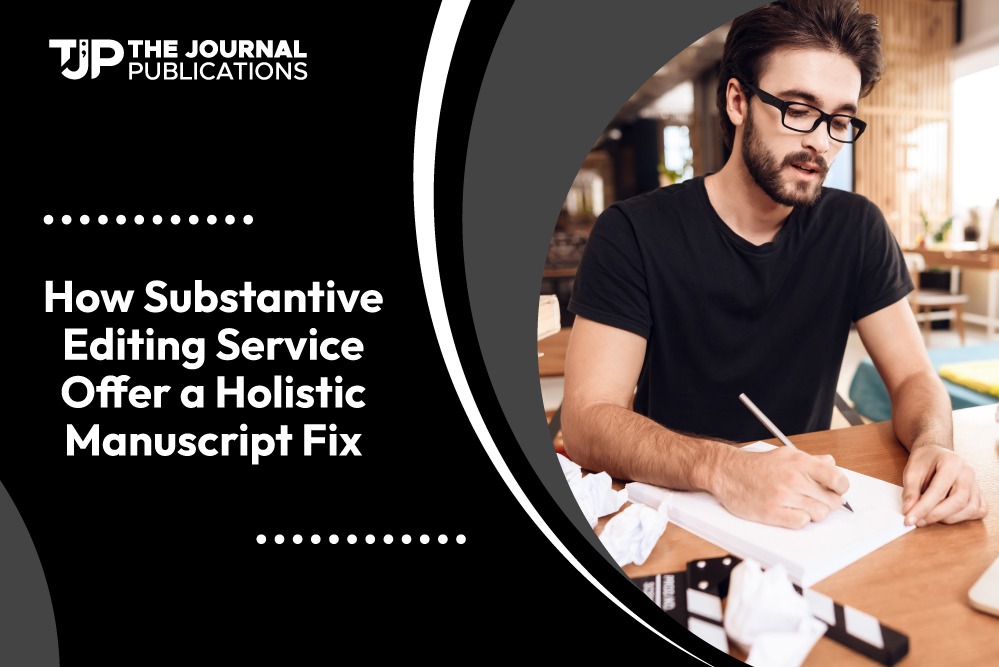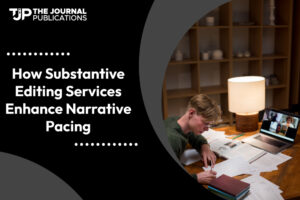Outline
- Intro
- What is substantive editing?
- The Manuscript Development Process as a Holistic Approach
- Substantive, Developmental, and Line Editing the Difference
- Levels of Reworking in Substantive Editing
- The Role of a Substantive Editor
- Techniques Used in Substantive Editing
- Why a Holistic Approach Matters
- How Substantive Editing Adapts to Trends in Modern Writing
- The Impact of Technological Advances on Substantive Editing
- Adapting to Changing Reader Expectations
- Multidisciplinary Approaches to Substantive Editing
- Case Studies: Substantive Editing, Transforming Manuscripts
- Substantive Editing Across the Genres
- How to Choose the Accurate Substantive Editing Service
- FAQs
Intro
The substantive editing service offers an all-inclusive approach to the improvement of manuscripts, and for this reason, it becomes one of the prime steps for writers to take their work to the next level. Substantive editing differs from mere proofreading or copyediting in that it is more of an investment regarding the working of the material’s content the clarity of the ideas in sentence structure and the cohesion of paragraphs. In this blog, we peer deeper at how a holistic approach in substantive editing makes all the differences with a manuscript, the benefits derived from this service, and how it is in tune with major trends in the market of editing services.
What is substantive editing?
Substantive editing, otherwise called structural or content editing, is an in-depth editorial process intended to refine a manuscript in terms of its content, structure, clarity, and, eventually, flow. Other than basic copyediting, which deals with grammar, spelling, and punctuation, substantive editing services go beyond the superficial. This involves the restructuring of sentences, the rearrangement of paragraphs, and at times even an overhaul of whole sections to maximum readability and effect.
The Manuscript Development Process as a Holistic Approach
A holistic approach to substantive editing calls for taking a step back, away from the details, and examining the big picture of the manuscript. This includes:
- Analyzing Content for Consistency: Ensuring ideas are logically presented and arguments are fully developed.
- Enhancing Structure: Reorganizing content to create a more coherent and compelling narrative or argument.
- Voice and tone: Strengthening voice and tone, making the text coherent with the intended audience and genre.
Substantive, Developmental, and Line Editing the Difference
Substantive editing is intertwined with developmental editing and line editing. Have a look at the difference:
- Developmental Editing: This is the first stage of editing, as it deals with the complete structure, concept, and content development.
- Line Editing: This is a refinement in writing style, flow, and readability of sentence and paragraph levels.
- Substantive editing involves both the previously mentioned aspects, where he reworks the content heavily for coherence, structure, and clarity.
Levels of Reworking in Substantive Editing
The key feature of substantive editing is at multi-levels:
- Sentence Structure: Simplifying complex sentences, eliminating redundancies, and improving clarity in the content flow.
- Paragraph Coherence: Re-arrange the ideas within paragraphs for better flow and logical developments.
- Overall Argument or Storyline: This involves strengthening the narrative arc in fiction or refining the argument in non-fiction.
The Role of a Substantive Editor
A substantive editor’s responsibilities, above all, involves:
- Evaluating the overall coherence and flow of the manuscript.
- Reorganization of content to logically develop the ideas.
- Strengthening the manuscript’s voice and tone for the intended audience.
The skills required for a substantive editor go beyond having a strong command of the language. They also have to be aware of narrative structure, pacing, and audience engagement.
Techniques used in substantive editing
Among the most common substantive editing techniques are:
- Re-arrangement of Content: Moving sections around to ensure better narrative flow.
- Restructuring Arguments: Refining the logic behind arguments to make them more persuasive.
- Tone and voice: making sure the voice of the manuscript is suitable for the intended audience.
Why a Holistic Approach Matters
A holistic approach means the manuscript is more than grammatically correct; it is polished and well-structured to resonate with readers. Some of the benefits derived from such a comprehensive process are:
- Improved Readability: A well-edited manuscript reads more smoothly.
- Improved Coherence: There is a smooth flow of ideas; hence, the text is more convincing or appealing.
- More Engagement: A professional manuscript keeps the readers engaged and focused on the content.
How Substantive Editing Adapts to Trends in Modern Writing
Substantive editing is an evolving field; editors have kept on evolving due to the continuous change in trends and technologies:
- Style of Writing: This involves the infusion of minimalist trends, conversational tones, or even industry-specific jargon.
- Multimedia Integration: Content editing with the option to include images, sounds, or other interactive media.
Cross-Genre Writing: The use of adaptation strategies in editing hybrid genres that merge traditional writing forms.
The Impact of Technological Advances on Substantive Editing
Integration of AI tools has contributed to some substantive editing of increased efficiency by:
- Automation of Repetitive Work: Tools can rapidly find spelling, grammatical, and punctuation errors.
- AI-based software can also provide structural feedback while highlighting the irregularities either in structure or flow.
- Analyzing Audience Engagement: This predicts how well a manuscript resonates with readers according to analysis of style and content.
Adapting to Changing Reader Expectations
Since audiences are heterogeneous and dynamic, substantive editing service therefore focuses on the following:
- Cultural sensitivity: ensuring that content is appropriate for a worldwide audience.
- Genre-Specific Trends: Adapting style and structure to meet the expectations of different readerships.
- Attention Spans Are Shorter: How to structure content to help retain reader interest in today’s rapid digital pace.
Multidisciplinary Approaches to Substantive Editing
Today, many editors work across genres and fields, combining the skills of literature, journalism, marketing, and technical writing. Such interdisciplinary enriches the editing process by:
- Diverse Perspectives: Integrating knowledge from different fields to make the content better-rounded.
- Applying individual techniques: Applying special strategies for special types of writing to improve the quality of content.
Case Studies: Substantive Editing, Transforming Manuscripts
Real-life examples can be used to show the great effect substantive editing has on manuscripts. Successful case studies have:
- Significant Content Reorganization: How the rearranging of sections helps improve narrative flow.
- Voice refining the tone helped align a manuscript with its target audience.
Structural Adjustments: How the restructuring of sentences and paragraphs improved readability.
Substantive Editing Across the Genres
Approach to Substantive Editing The approach to substantive editing varies depending upon genre:
- Fiction: The body is all about narrative arc, character development, and pacing.
- Non-Fiction: Logical structure, strength of the argument, and accuracy of facts become pivotal.
- Academic Writing: Clarity, precision, and formal standard exacting are ensured.
- Business Documents: Assisting in maintaining the right tone, conciseness, and also professional language.
How to Choose the Accurate Substantive Editing Services
Before choosing the substantive editing service, it is essential to bear in mind:
- Editor’s Experience and Expertise: Check for experience in the relevant genre.
- Range of Services Offered: Some services include developmental editing, line editing, or proofreading.
- Provide Testimonials and Case Studies: This is related to an editor’s effectiveness with previous clients.
FAQs:
-
How much time does substantive editing take?
It depends on the length and the complexity of the manuscript, but typically several weeks.
-
Does substantive editing assist with non-native English manuscripts?
Yes, substantive editors refine the content for clarity and enhancement of quality in the manuscript.
-
How much does substantive editing cost, normally?
Prices can be very different according to the length, genre of the manuscript, and experience of the editor.
-
Must substantive editing be done by the self-published authors themselves?
Yes, it immensely enhances the quality of the manuscript and its potential for success in the market.
-
Does substantive editing imply publication?
Whereas this enhances the quality of the manuscript, publication depends on factors such as prevailing market trends and submission guidelines.



